Syn.: Anemone occidentalis S. Watson, Preonanthus occidentalis (S. Watson) Skalický, Pulsatilla occidentalis (S. Watson) Coville
Family: Ranunculaceae Juss.
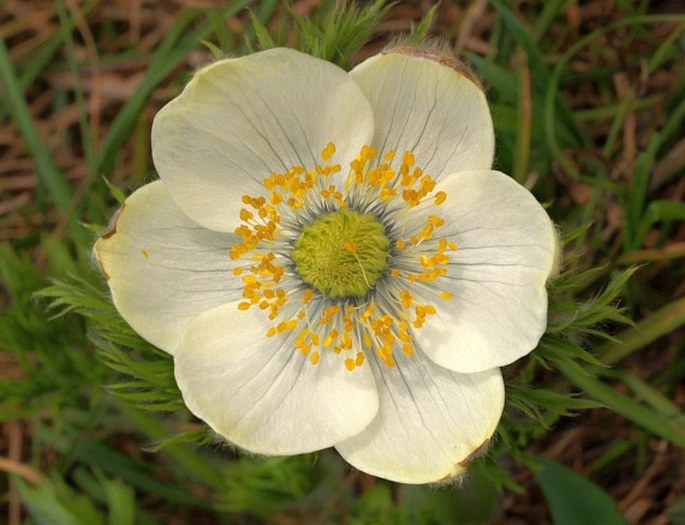
Distribution: West of North America, from British Columbia and Alberta to Washington, Idaho, Montana, Oregon and California.
Ecology: Moist mountain meadows, forest margins, often very close to snow in elevations from 500 m but mostly in high elevations from 1800 to 3700 m. Blooms when snow melts in late June or July.

Description: Perennial herb, 10–60 cm tall. Stem erect, woolly when in flower, at maturity almost hairless. 3–6 basal leaves, 3–6 cm across, palmately divided into 3 segments, linear to narrowly lanceolate lobes, central division 2.5–8 cm long, petioles 6–8 cm long, surfaces woolly haired, stem leaves in whorl of 3, short-petiolate. Flower solitary, terminal, short woolly pedicel, 5–7 cm across, bracts in whorl of usually 3, perianth-segments 5–7, white, tinged with pale blue or purple; stamens and pistils numerous. Fruit is an achene 3–4 mm long with feathery styles, 2–4 cm long; fruiting head resembles a pin cushion, later a mop.
Use: Native tribes used this plant in their traditional medicine, despite of the fact that all its parts are poisonous.
Note: Some botanists include the genus Pulsatilla in Anemone, to which it is closely related.

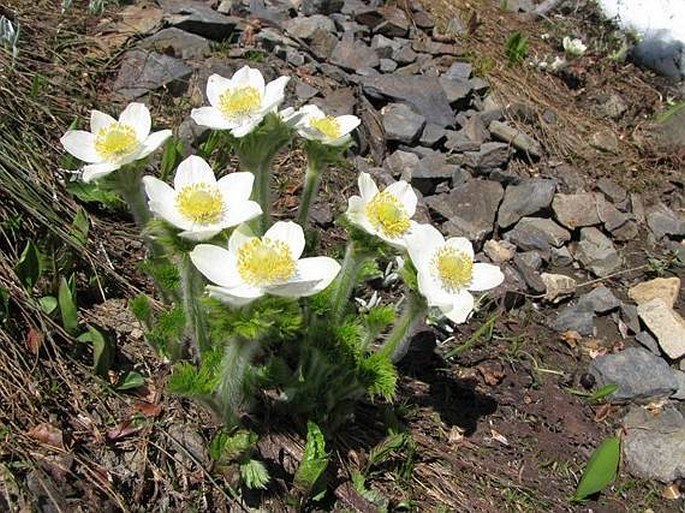
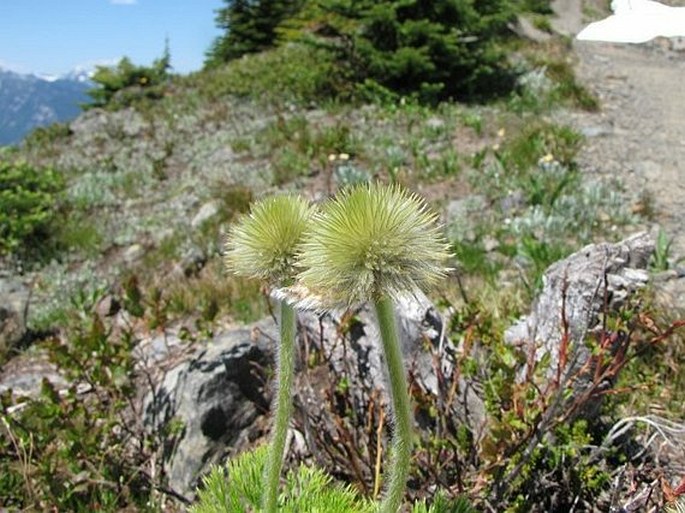
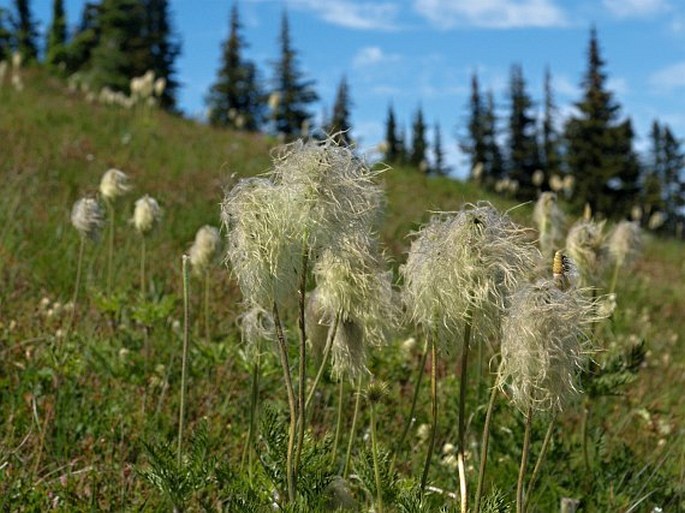
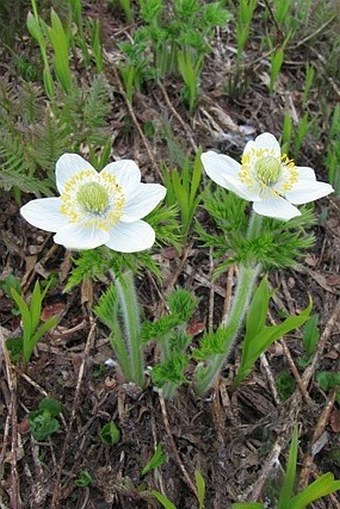

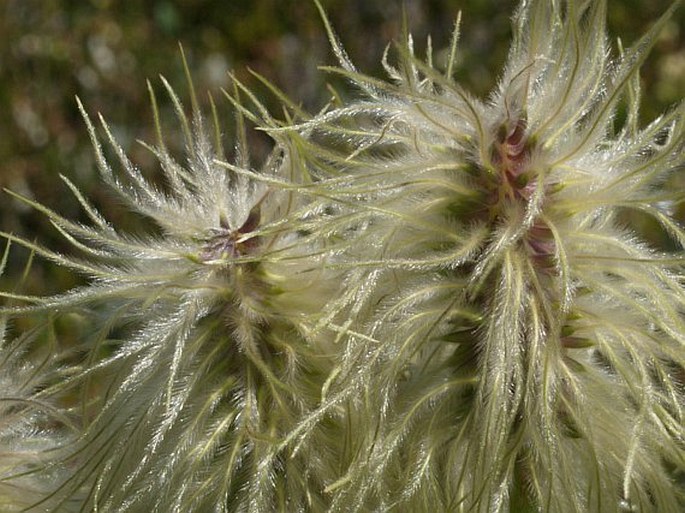
These images were taken in Canada, British Columbia, Idaho Peak (by Karel Bergmann, July 3, 2009), and Alberta, Jasper NP, Mt. Edith Cavell, and Banff NP, Sentinell Pass (by Alena Vydrová and Vít Grulich, July 17 and 26, 2007).


